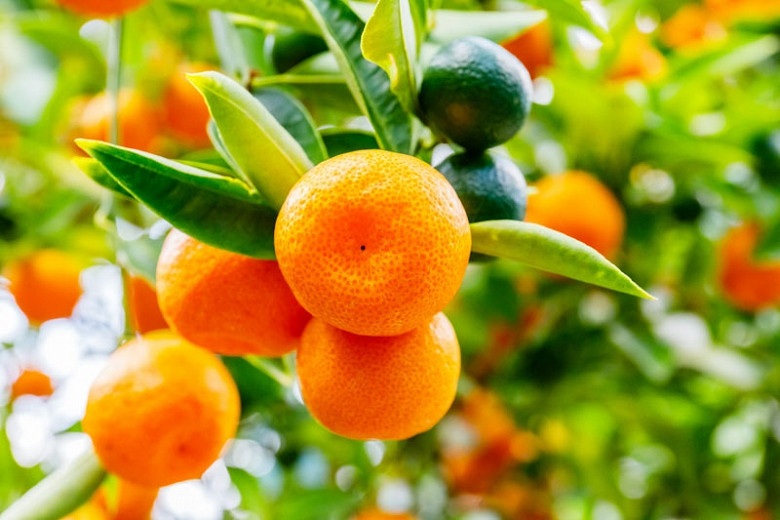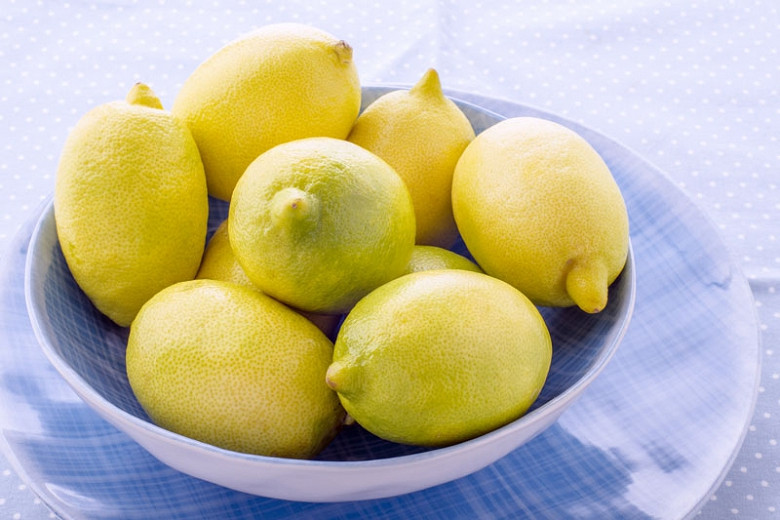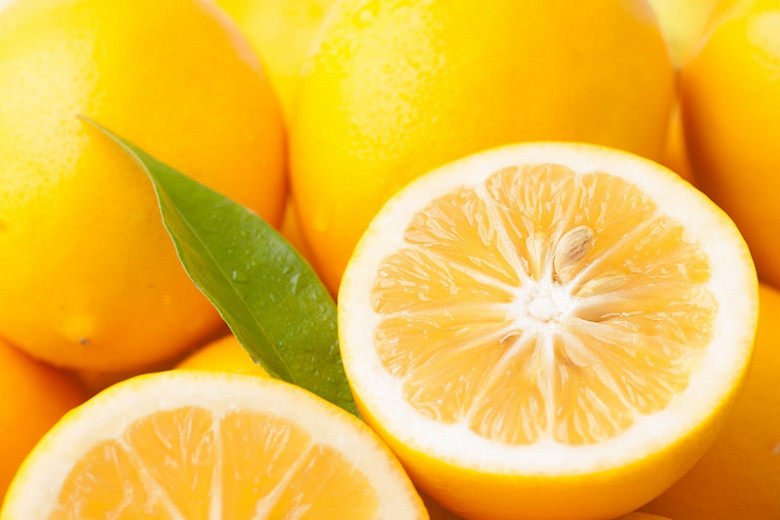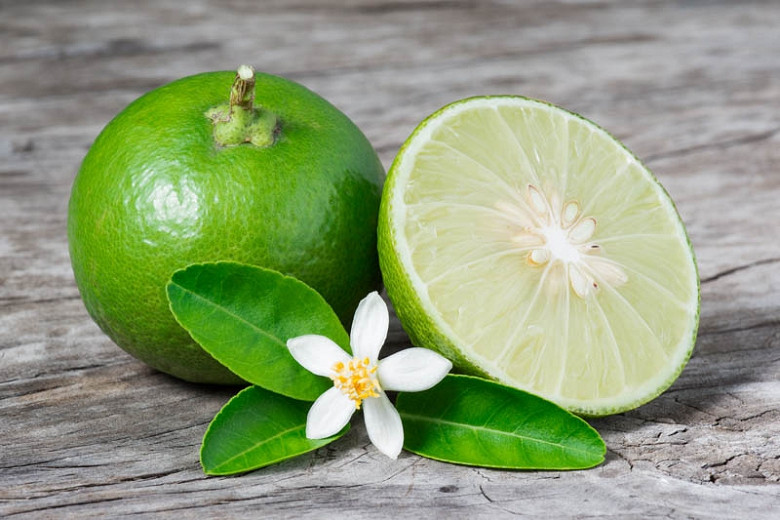Citrus x microcarpa (Calamondin)
Citrus x microcarpa (Calamondin) is a bushy evergreen shrub of upright and columnar habit, prized for its elliptic, glossy rich green leaves and very small, round, orange fruits. The orange flesh is acidic, juicy, and contains a few seeds. The peel is thin and smooth, yellow-orange, and easily separable. Calamondin flowers and sets fruit intermittently throughout the year, adding to the shrub's decorative appeal and filling the air with the aroma of citrus blossom. The flowers are self-fertile and require no cross-pollination. The Calamondin fruit takes nearly a year to ripen, so it maintains its ornamental value to the landscape longer than most citrus. The fruit lends itself to many culinary uses such as beverages, cakes, pies, preserves, sauces, soups, and teas. Calamondin is believed to be a natural hybrid, with kumquat in the parentage. Grown more for its ornamental value than for its fruit edibility, Calamondin performs well as a patio plant or trimmed as a hedge. It is one of the most popular potted citruses.
- Recipient of the prestigious Award of Garden Merit of the Royal Horticultural Society.
- Grows up to 6-10 ft. tall (180-300 cm) and 4-5 ft. wide (120-150 cm).
- A direct sunlight or half shade lover, this plant is easily grown in sandy, neutral or acidic, well-drained soils. Needs water regularly but cannot stand flooding or saturated soils.
- Hardier to cold than any other true citrus species, Calamondin thrives in warm climates, typically enjoying temperatures between 55-85°F (12-29°C). Grow it indoors in a warm, sunny room and move it outdoors in late spring to a sunny spot protected from the wind.
- Restrictive pruning under glass in winter or early spring.
- Generally disease free. Keep an eye out for glasshouse red spider mites, glasshouse whitefly, scale insects, and mealybugs under glass.
- Propagate by seed at 16°C in spring; seedlings do not come true to type. Propagate by semi-ripe cuttings in summer.
Requirements
| Hardiness | 10 – 11 |
|---|---|
| Climate Zones | 7, 8, 9, 12, 13, 14, 15, 16, 17, 18, 19, 20, 21, 22, 23, 24, H1, H2 |
| Plant Type | Fruit, Shrubs |
| Plant Family | Citrus |
| Exposure | Full Sun, Partial Sun |
| Season of Interest | Spring (Early,Mid,Late)Summer (Early,Mid,Late)FallWinter |
| Height | 6' – 10' (180cm – 3m) |
| Spread | 4' – 5' (120cm – 150cm) |
| Spacing | 48″ – 60″ (120cm – 150cm) |
| Water Needs | Average |
| Maintenance | Average |
| Soil Type | Loam, Sand |
| Soil pH | Acid, Neutral |
| Soil Drainage | Moist but Well-Drained |
| Characteristics | Fragrant, Plant of Merit, Showy, Evergreen, Fruit & Berries |
| Garden Uses | Hedges and Screens, Patio and Containers |
| Garden Styles | Informal and Cottage, Mediterranean Garden |








